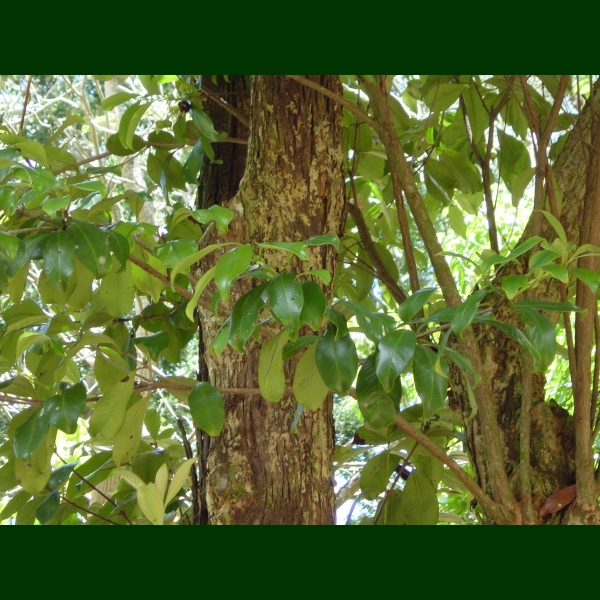 Hawaiian Name(s): hame, ha‘a, ha‘āmaile, hamehame, mehamehame
Hawaiian Name(s): hame, ha‘a, ha‘āmaile, hamehame, mehamehameScientific Name: Antidesma (2 species)
Vernacular Name: none
Family: Euphorbiaceae
Status: endemic
Authority: A. platyphyllum H.Mann, A. pulvinatum Hillebr.
Description: Trees 2-15 m.
Habitat A. platyphyllum common in mesic to wet forest, bog, 150–1525 m, A. pulvinatum dry to mesic forest, 30–1220 m (Wagner et al. 1990:600–601).
Medicines: To treat Ho‘opapailua lua‘i (nausea) and lua‘i mau (constant vomiting), the green leaves of the ha‘a tree are chewed into a swallowed. This is followed by Hawaiian pia (Tacca leontopetaloides). To treat ulcers or scrofulous sores, ha‘a bark, ‘ahakea bark (Bobea spp.), ala‘a bark (Pouteria sandwicensis) and auko‘i stalk (Senna occidentalis) are mashed into liquid form and mixed with water. The liquid is strained with awa sedge and then boiled. Once cooled the mixture is applied to the affected area with ‘ulu sap (Artocarpus altilis), ‘awa powder (Piper methysticum), and lama wood (Diospyros spp.) (Chun 1994:72–73).
Non Medicinal Uses: Fruit used for red/dark purple dye, used with kamani oil for bathing malos (Rock 1913:249; Krauss 1993:65); wood for house frames (Abbott 1992:68); wood for kapa anvil to beat olonā (Rock 1913:249, Neal 1965:500). [These uses may be most commonly associated with A. platyphyllum]. In the Ethnology Collection at Bishop Museum there is a post-contact example of the wood made into a bowl.
Specific gravity of wood: unknown
Famous Locations:
Mele:
`Ōlelo Noeau:
Dye Color and Parts: Red to dark purple (stem bark)
Kino lau:
Location on Bishop Museum Kalihi Campus:
Propagation Information: Native Plants Hawaii.
Seed: Seed length approximately 2 mm. Photograph: B.Kennedy. Species: A. platyphyllum.

